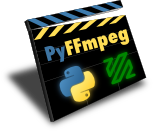

Same thing but using VLC to stream the live output to the web, Flash format: python capture.py | cvlc -demux=rawvideo -rawvid-fps= 30 -rawvid-width= 320 -rawvid-height= 240 -rawvid-chroma=RV24 -sout "#transcode There is no default, so this value must be specified explicitly.Īnd here’s a little something extra for the power users.


Sadly, I can’t get the ffmpeg magic incantation quite right and it fails with libavutil 50.15. Now I want to pipe the output to ffmpeg as in: $ python capture.py | ffmpeg -f image2pipe -pix_fmt bgr8 -i -s 640x480 foo.avi Here’s a fairly straightforward example of reading off a web cam using OpenCV’s python bindings: '''capture.py''' import cv, sysĬap = cv.CaptureFromCAM( 0) # 0 is for /dev/video0 while True :


 0 kommentar(er)
0 kommentar(er)
